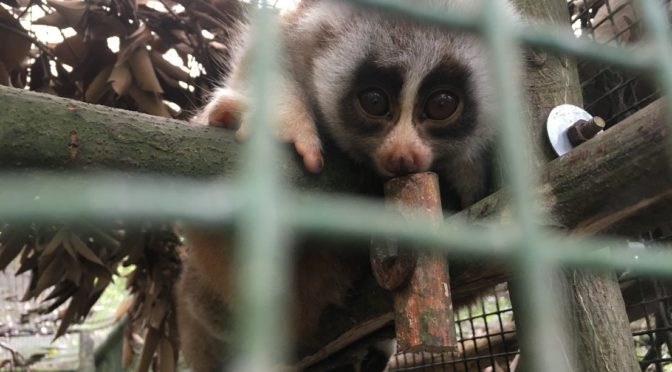Xin chào! I can’t believe this is already my fourth Culi Tuesday! Time really flies here at the EPRC.
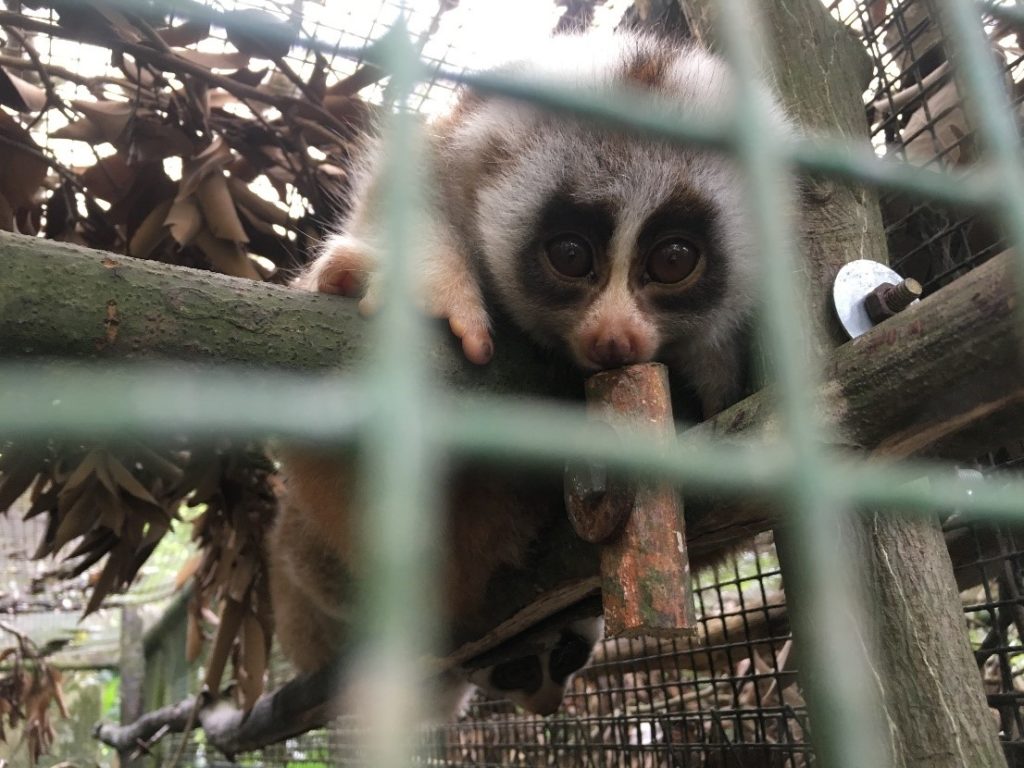
Loris diet
A hot topic for captive loris care is diet. Here at the EPRC they receive fruit/veggies and gum daily. During the summer time with insects are abundant, they get those, too! Just before winter, they collect insects, blend them together, and freeze them so that the lorises can get bugs during the cold winter months when the insects disappear. Additional sources of protein and nutrients comes from hard boiled eggs, powdered milk, meal worms, and cat food, on occasion.
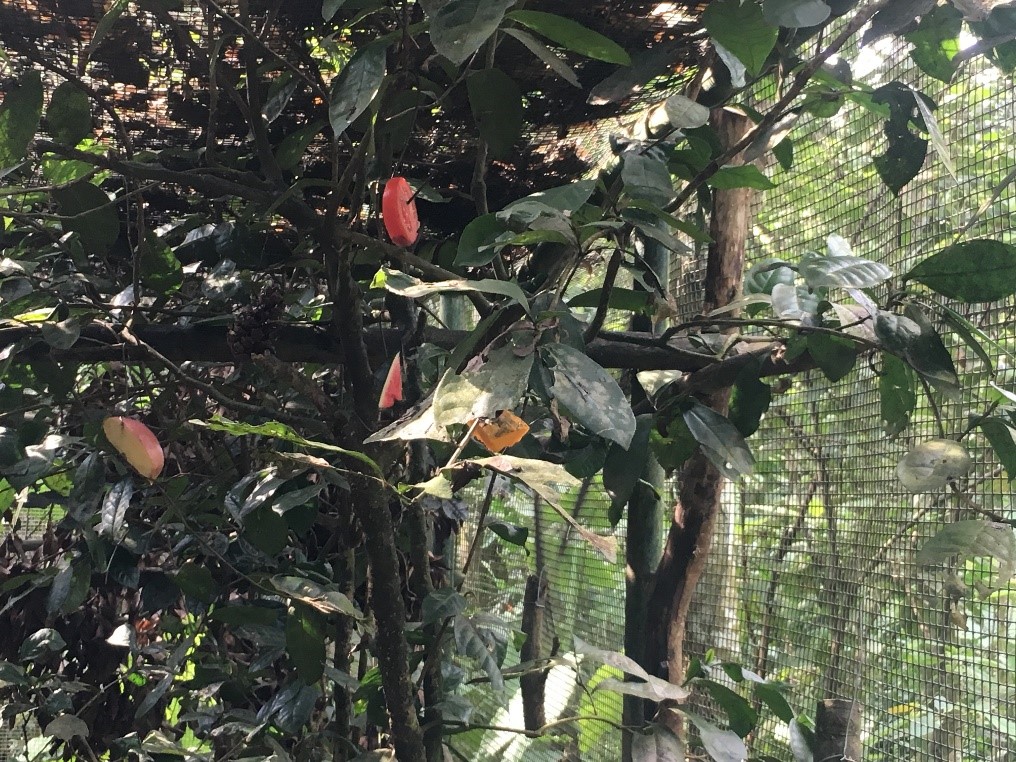
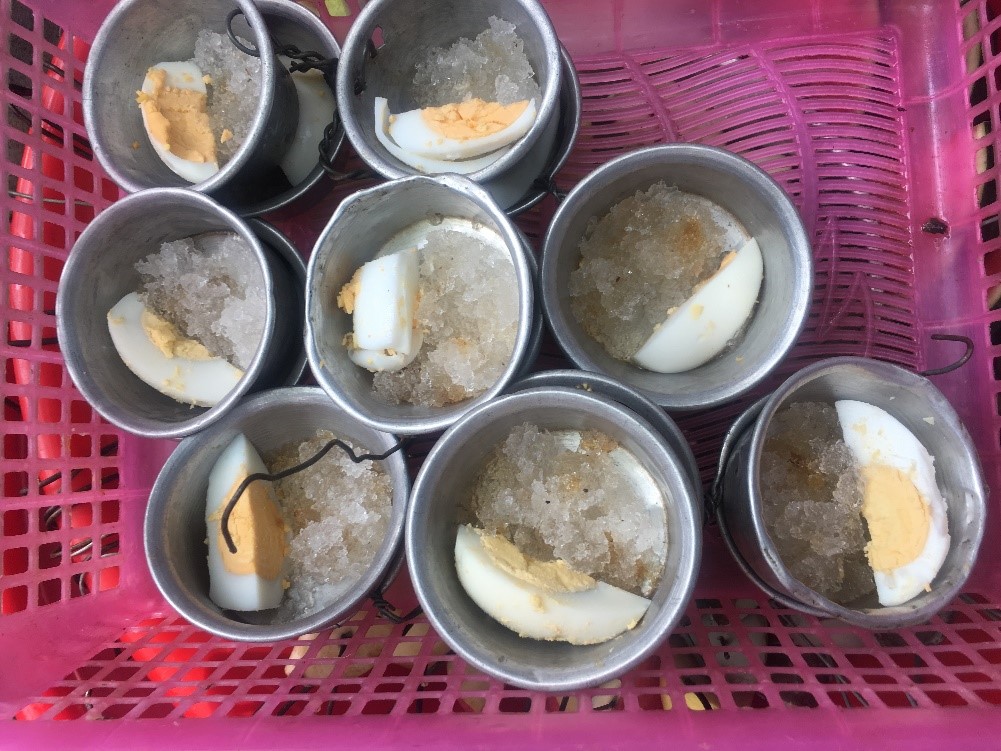
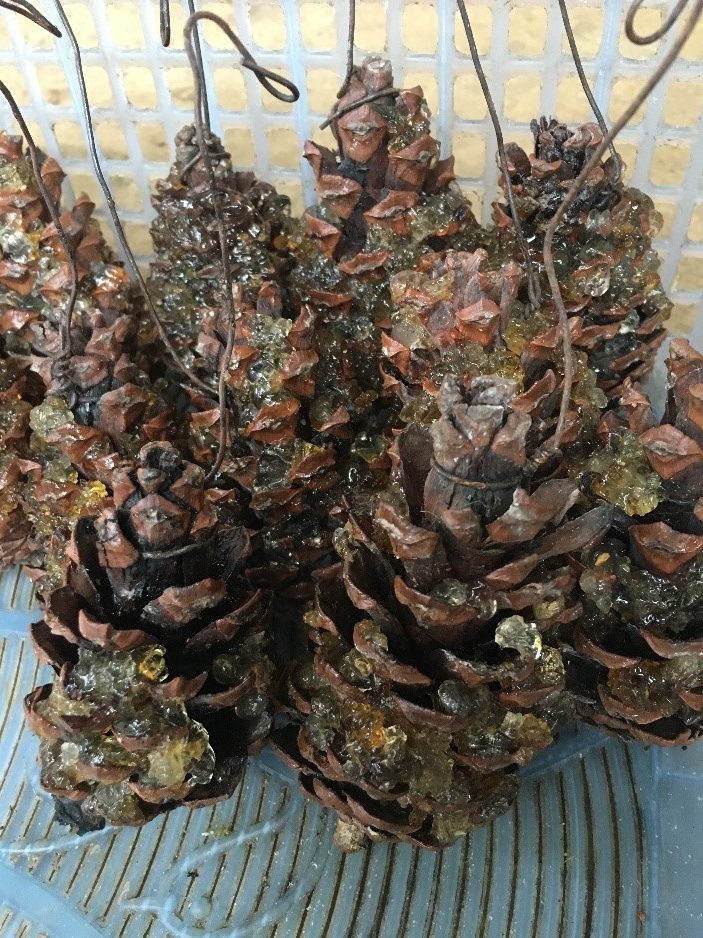
While the gum is usually given in small metal bowls, it is sometimes presented to the lorises in different ways. Here some different types of gum are spread on pinecone!
Tweet and Chip
Recently, I’ve taken over feeding for two pygmy lorises, known as Tweet and Chip, to be able to get a better idea of the actual amount of food they eat (often pieces of food are leftover) and to gauge their gouging ability (gum is usually fed in a bowl). Husbandry kindly prepares the fruit/veggies for me, and I just have to weigh it. So, my afternoons have been full of stick bug and tree gum collecting! Relative to the superfast crickets and well camouflaged grasshoppers, stick bugs are the easiest to find and catch.
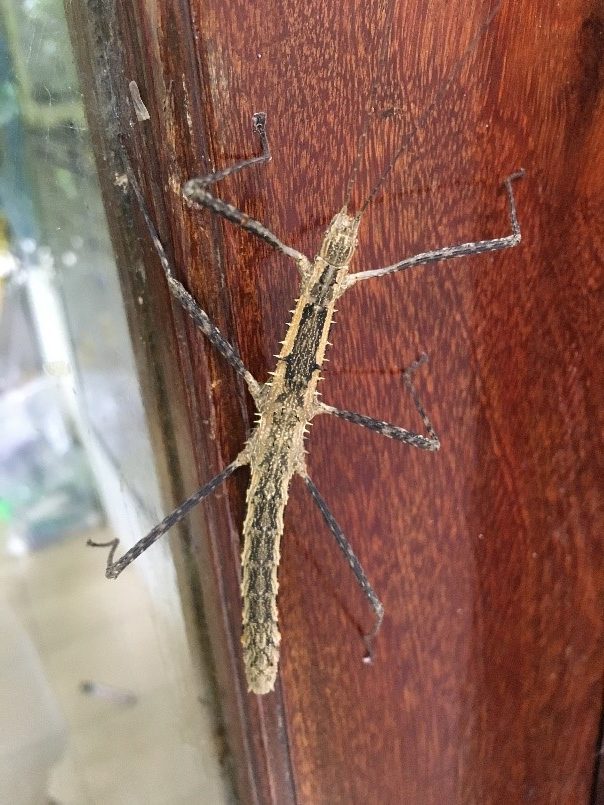
Mu chom
As for the gum, the lorises get a variety. After a recommendation from another primate rescue in southern Vietnam, the EPRC started buying packaged ‘mu chom’, which comes from Sterulica foetodia. It comes in hard crystals that after being soaked overnight turn in jully-like gum. However, the lorises at the EPRC don’t like it! In order to get them to eat the mu chom, it must be mixed with other gums, such as Arabic gum. Gum straight from trees is used as well. In addition to gum leaking trees at the Center, some of the keepers have peach trees, known as Dao, around there homes in which they can collect gum.
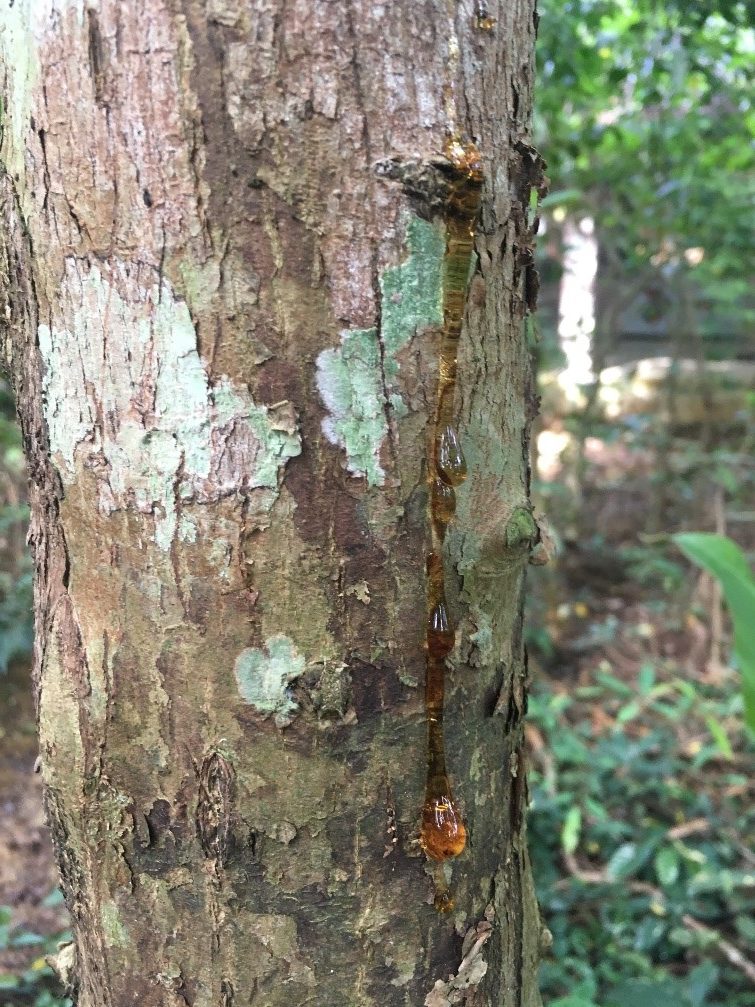
A tasty mixture
Of the gum leaking trees at the Center which I’ve been exploiting for Chip and Tweet, I’ve had the most success with ‘xoan’. After collecting the tree gum, I sometimes add in some mu chom and Arabic gum as well and stir them all together for what, I assume, is a tasty mixture! Now how I decided to give them their gum mixture to determine if they could gouge bark, as is essential for their wild survival, is a hole other story I’ll elaborate on next week!

